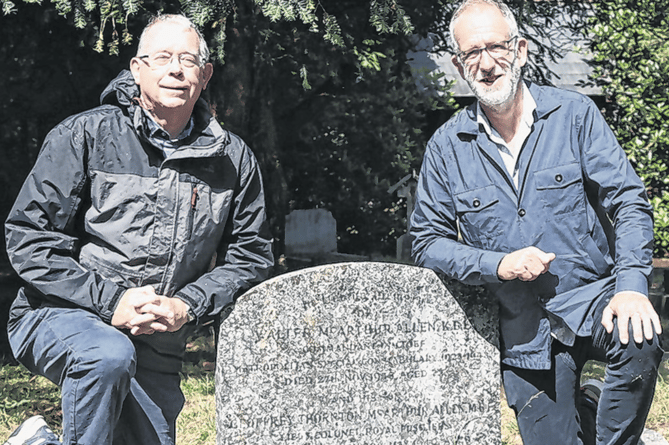With the latest Ashes series drawn and Australia retaining the coveted urn, now seems an appropriate time to reflect on the careers of an England cricketer and an Australia cricketer who are buried in Brookwood Cemetery.
Reader Bruce McLaren has written to say the Englishman was Sir George Oswald Browning “Gubby” Allen, and the Australian was Frederick Robert Spofforth, who was known as “The Demon Bowler”.
Allen was born in Australia in 1902 but grew up in England from the age of six.
He was a fast bowler and a hard-hitting lower-order batter.
Educated at Eton College and Cambridge University, Allen played for his university and Middlesex.
He made his England debut in 1930 and was a member of the 1932-33 Ashes tour of Australia.
This tour is famous for England’s controversial and intimidating Bodyline, or fast leg, theory.
The tactic was to aim the ball at pace at a batter’s leg stump or just outside, pitching the ball short so it reared up at his body.
It was used to combat the batting skills of Australia’s Don Bradman.
However, it appears Allen refused to use the Bodyline tactic, but did captain England in 11 Tests.
He might have played for his county and country more, but from 1933 he had a day job at the London Stock Exchange, working as an underwriter for the Royal Exchange Assurance Corporation. This, no doubt, limited his time playing first-class cricket.
However, Allen did find time to play at weekends, which included appearing for the Marylebone Cricket Club (MCC).
During the Second World War, Allen had a distinguished career with the Royal Artillery. Part of his work involved being an anti-aircraft liaison officer, sharing intelligence on German anti-aircraft operations with RAF bomber groups.
After his playing days, Allen became a key figure in world cricket.
He was instrumental in the MCC’s coaching manual, was chairman of England’s selectors from 1955 to 1961, and was the MCC’s president and club treasurer.
He was knighted in 1986 and died in 1989 at the flat he lived in close to Lord’s cricket ground in London.
Spofforth was born in 1853 in Sydney, Australia. He became a pace bowler and played his first Test in 1877.
He made his name in 1878, during Australia’s England tour.
In a match at Lord’s, Spofforth and his team-mates dismissed the MCC twice in one day, for 33 and 19 runs respectively, and won by nine wickets.
Spofforth took ten wickets for 20 runs, and bowled the legendary WG Grace for a duck.
It is said that in the dressing room after the match, Spofforth announced: “Ain’t I a demon? Ain’t I a demon?” – and that may have been how he became known as “The Demon Bowler”.
During England’s tour of Australia in 1879, Spofforth became the first man to get a hat-trick in Test cricket.
Three years later, Spofforth played in the Test at the Oval that is said to have given birth to what became the Ashes series.
With England needing 85 runs to win, Spofforth led his team to victory by seven runs.
His match figures were 14 wickets for 90 runs.
Spofforth moved to England in 1888. Although living in Derbyshire, initially he played for Yorkshire.
He captained Derbyshire in 1890.
After his playing days, Spofforth managed the Star Tea Company, a business owned by his father-in-law.
Spofforth later lived at Long Ditton, near Surbiton. He died in 1926.
Bruce said: “Neither Allen nor Spofforth’s graves are marked by Brookwood Cemetery as significant, which is surprising.
“I came across Allen’s grave by chance on a walk one day and then researched and found Spofforth’s grave.
“The MCC is putting together plans to renovate the Allen family grave given the somewhat tired condition and to reflect the position ‘Gubby’ Allen had in the game of cricket.
“The MCC has just published plans to rebuild the stand in his name and the Tavern stand at Lord’s.”




